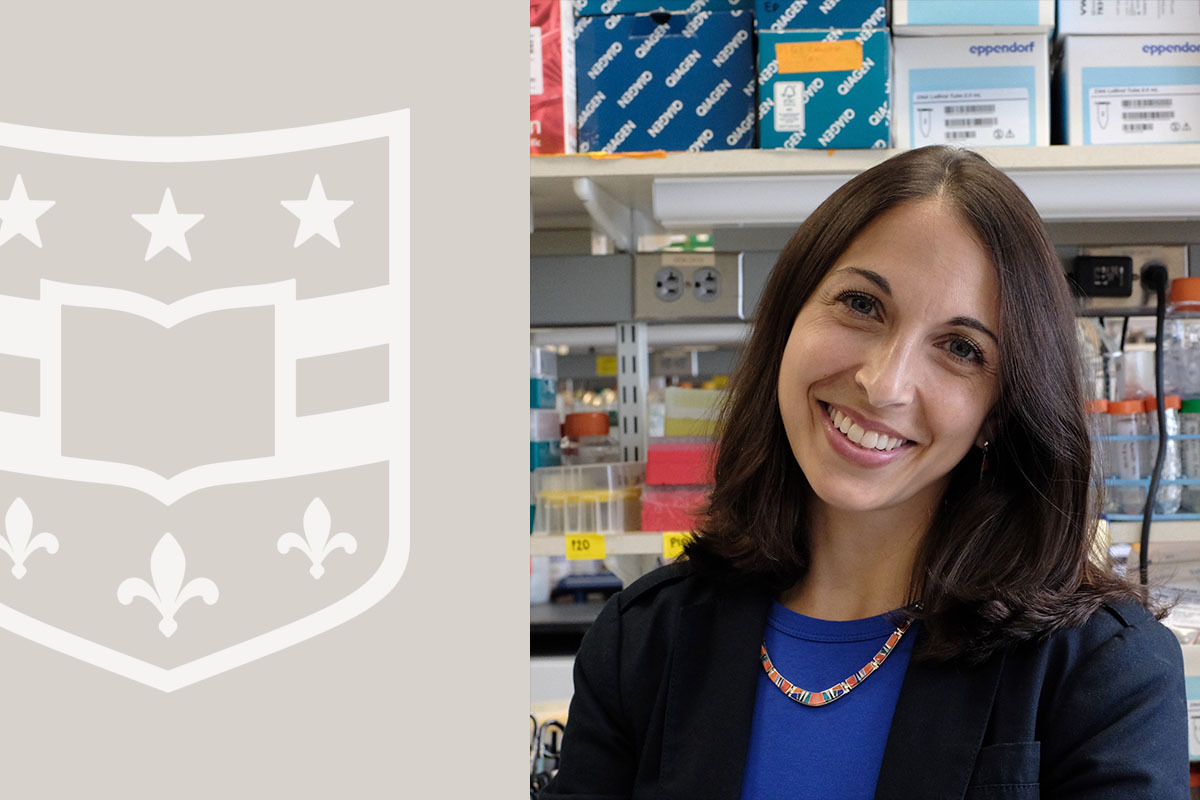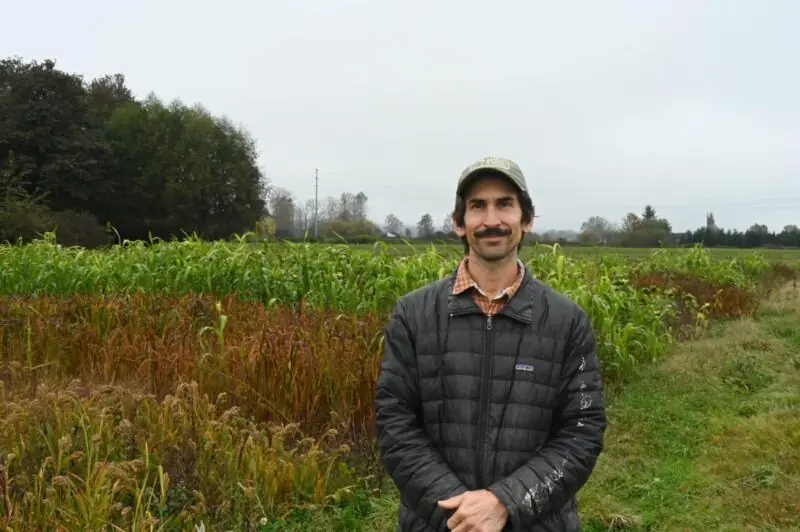Protecting our food future: Experts confront biodiversity crisis – WashU

Report on the “Policy, Biodiversity and the Future of Food” Initiative
Introduction: Biodiversity Loss and its Impact on Sustainable Development Goals (SDGs)
The global agrifood system faces a critical challenge characterized by a significant loss of biodiversity, which directly undermines progress toward several Sustainable Development Goals (SDGs). The increasing fragility of food systems, evidenced by the fact that just nine plant species constitute 65% of the world’s food supply, presents a direct threat to global food security and human health.
- SDG 2 (Zero Hunger): The decline in genetic, species, and ecosystem diversity jeopardizes food security and the resilience of agricultural systems.
- SDG 3 (Good Health and Well-being): A lack of dietary diversity resulting from biodiversity loss has negative consequences for human nutrition and overall health.
- SDG 15 (Life on Land): The unprecedented loss of biodiversity is a core concern of this goal, which seeks to protect and restore terrestrial ecosystems.
Event Overview: A Collaborative Approach to SDG Advancement
In response to these challenges, the School of Public Health at Washington University in St. Louis has organized a panel discussion to foster multi-stakeholder collaboration, a key component of SDG 17 (Partnerships for the Goals). The event aims to address the intersection of policy, biodiversity, and the future of food.
- Title: “Policy, Biodiversity and the Future of Food”
- Date and Time: Tuesday, Sept. 23, from 4:00 p.m. to 5:15 p.m.
- Venue: Umrath Hall Lounge and via Zoom (Hybrid)
- Primary Objective: To convene experts for a discussion on policy frameworks and actionable strategies to protect biodiversity, thereby ensuring food and nutrition security in line with the 2030 Agenda for Sustainable Development.
Key Participants and Thematic Focus
The panel comprises leading experts whose work directly contributes to achieving various SDGs. The discussion will be moderated by Dr. Sandro Galea, Dean of the School of Public Health.
- Dr. Kaleab Baye: A professor of human nutrition at Addis Ababa University, his research on the effects of biodiversity loss on maternal and child nutrition aligns with SDG 2 and SDG 3.
- Dr. Gina Kennedy: A principal scientist with the Alliance of Bioversity International, her work focuses on enhancing agricultural biodiversity to create sustainable food systems, contributing to SDG 2 and SDG 15.
- Anna Nelson: Executive director of the Food Security Leadership Council and former deputy special envoy for global food security, her policy expertise is crucial for advancing SDG 2 through international cooperation, reflecting SDG 17.
The event will also feature remarks from Dr. Morven A. McLean and Dr. Lora L. Iannotti of the university’s Food and Agriculture Research Mission (FARM), underscoring the institutional commitment to these global goals.
Strategic Objectives and Expected Outcomes
The panel discussion is designed to produce actionable insights and foster partnerships to address the biodiversity crisis within food systems. The primary strategic objectives include:
- To analyze and propose policy frameworks that support the conservation and sustainable use of agrifood biodiversity.
- To identify and promote community-level solutions that enhance food security and protect ecosystems, contributing to SDG 2 and SDG 15.
- To formulate strategies that link biodiversity directly to improved nutritional outcomes, supporting SDG 3.
- To strengthen the network of researchers, policymakers, and advocates working collaboratively towards a sustainable future, in the spirit of SDG 17.
Analysis of Sustainable Development Goals (SDGs) in the Article
1. Which SDGs are addressed or connected to the issues highlighted in the article?
-
SDG 2: Zero Hunger
- The article directly addresses this goal by focusing on threats to “food security” and “nutrition security.” It highlights how the fragility of “agrifood systems” due to biodiversity loss jeopardizes the global food supply. The core issue discussed is the sustainability of how the world “grows and sustains its food.”
-
SDG 15: Life on Land
- This goal is central to the article’s theme. The text explicitly warns of an “unprecedented loss of biodiversity — at genetic, species and ecosystems levels.” It discusses how “genetic diversity dwindles and ecosystems falter,” which are key concerns of SDG 15, particularly its targets related to halting biodiversity loss and protecting ecosystems.
-
SDG 3: Good Health and Well-being
- The article connects the loss of agricultural biodiversity to “human health.” It mentions that a panelist is a leading researcher on how “biodiversity loss affects maternal and child nutrition,” directly linking the environmental issue to specific health outcomes, which is a primary focus of SDG 3.
2. What specific targets under those SDGs can be identified based on the article’s content?
-
Target 2.5: Maintain genetic diversity of seeds and cultivated plants
- This target is the most directly relevant. The article’s opening statement that “Just nine plant species now provide 65% of the world’s food supply” is a stark illustration of the lack of genetic diversity in agriculture, which this target aims to address. The entire discussion revolves around the consequences of this dwindling genetic diversity.
-
Target 15.5: Halt biodiversity loss
- The article’s warning about the “unprecedented loss of biodiversity” and the fact that “genetic diversity dwindles” directly aligns with the call to action in this target to halt the loss of biodiversity. The focus is on the consequences of failing to meet this target for the global food system.
-
Target 2.4: Ensure sustainable food production systems and resilient agricultural practices
- The article explains that as biodiversity is lost and “ecosystems falter, agrifood systems grow increasingly fragile.” This points to a failure to achieve sustainable and resilient food production systems, which is the goal of Target 2.4. The panel discussion aims to find “actionable strategies” to address this fragility.
-
Target 15.9: Integrate ecosystem and biodiversity values into national and local planning
- The purpose of the panel discussion mentioned in the article is to explore “policy frameworks, community solutions and actionable strategies to protect and enhance biodiversity.” This directly reflects the aim of Target 15.9, which calls for the integration of biodiversity values into policy and planning processes.
3. Are there any indicators mentioned or implied in the article that can be used to measure progress towards the identified targets?
-
Proportion of food supply from a limited number of species
- The article provides a specific metric: “Just nine plant species now provide 65% of the world’s food supply.” This figure serves as a direct indicator of the lack of genetic diversity in agriculture (relevant to Target 2.5) and can be used as a baseline to measure progress in diversifying the food system.
-
Rate of biodiversity loss at genetic, species, and ecosystem levels
- The article refers to the “unprecedented loss of biodiversity” and how “genetic diversity dwindles.” While it doesn’t provide a specific rate, it implies that the rate of loss is a critical indicator for assessing the health of ecosystems and the sustainability of agriculture (relevant to Target 15.5).
-
Maternal and child nutrition outcomes
- The article mentions a panelist researching “how biodiversity loss affects maternal and child nutrition.” This implies that health indicators such as rates of stunting, wasting, or micronutrient deficiencies in these populations can be used to measure the human health impact of reduced dietary diversity resulting from biodiversity loss (relevant to SDG 3).
Summary Table of SDGs, Targets, and Indicators
| SDGs | Targets | Indicators (Mentioned or Implied in the Article) |
|---|---|---|
| SDG 2: Zero Hunger |
2.5: Maintain genetic diversity of seeds and cultivated plants.
2.4: Ensure sustainable food production systems and resilient agricultural practices. |
The number/proportion of plant species that constitute the majority of the world’s food supply (stated as “nine plant species now provide 65%”).
The fragility or resilience of agrifood systems. |
| SDG 15: Life on Land |
15.5: Halt biodiversity loss.
15.9: Integrate biodiversity values into national and local planning. |
The rate of loss of biodiversity at genetic, species, and ecosystem levels (described as “unprecedented”).
The existence and implementation of policy frameworks and actionable strategies to protect biodiversity. |
| SDG 3: Good Health and Well-being | (Implied) Targets related to nutrition and health outcomes. | Metrics related to maternal and child nutrition, as influenced by biodiversity and dietary diversity. |
Source: source.washu.edu

What is Your Reaction?
 Like
0
Like
0
 Dislike
0
Dislike
0
 Love
0
Love
0
 Funny
0
Funny
0
 Angry
0
Angry
0
 Sad
0
Sad
0
 Wow
0
Wow
0








































































